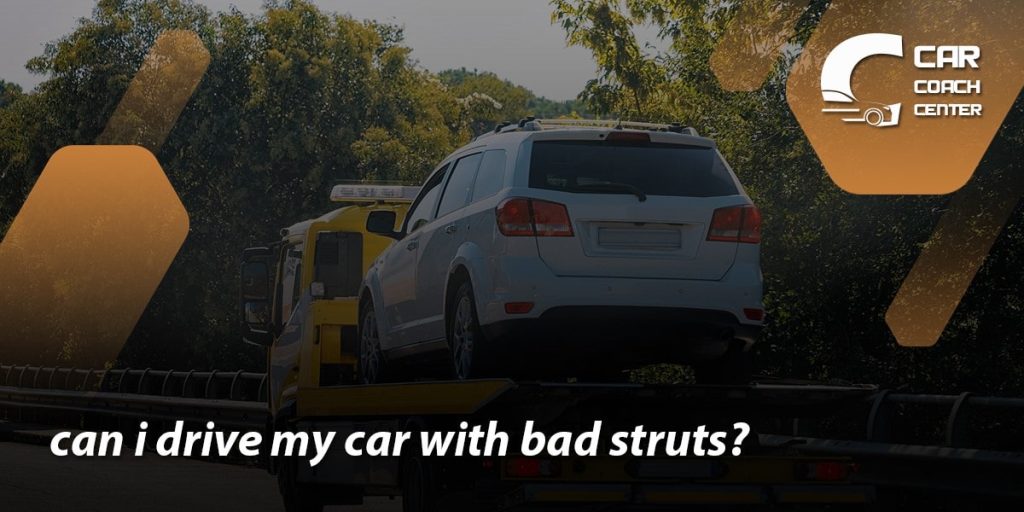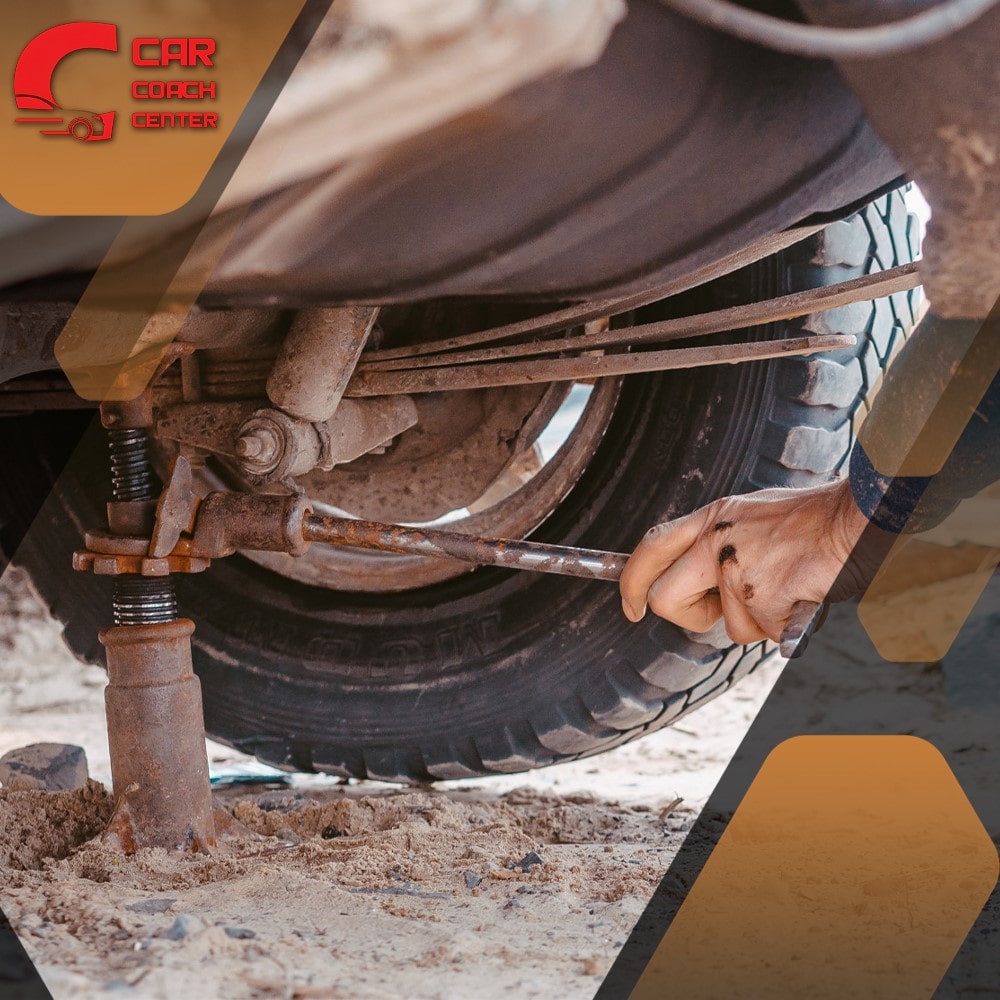Can You Drive With Bad Struts
When it comes to your vehicle’s smooth operation and safety, the suspension system plays a crucial role, with struts being an integral component. Struts are responsible for providing stability, absorbing shocks, and maintaining proper tire contact with the road. However, these vital suspension parts can wear out over time and become compromised. This begs the question: can you still drive with bad struts?

In this article, we will explore the world of struts and the implications of driving with worn-out or damaged ones. We will examine the telltale signs that indicate a problem, investigate the impact on vehicle handling and tire wear, and even touch upon fuel efficiency concerns. Furthermore, we will discuss maintenance tips to extend your struts’ lifespan and address whether it’s better to tackle the issue yourself or seek professional help.
By the end, you will have a comprehensive understanding of the consequences of driving with bad struts and the steps you can take to ensure a safer and smoother ride.
The Telltale Signs: How to Identify Bad Struts
Your vehicle’s struts are vital in maintaining a smooth and controlled ride. As these suspension components age or sustain damage, they can significantly impact your driving experience and compromise your safety. Recognizing the signs of bad struts is crucial to address the issue promptly. Here are some telltale signs to help you identify potential problems with your vehicle’s struts:
Bumpy and Unstable Ride
A noticeably rough and bumpy ride is one of the primary indicators of bad struts. If you feel every little imperfection on the road, experience excessive bouncing, or find it challenging to maintain control, your struts may be compromised.
Noisy Suspension
Attention to unusual noises from your suspension system. Creaking, knocking, or clunking sounds can signify worn-out or damaged struts, especially when driving over bumps or uneven surfaces.
Uneven Tire Wear
Bad struts can cause uneven tire wear patterns. Inspect your tires regularly for wear on the inner or outer edges. Excessive wear in specific areas indicates that your struts are not providing adequate support and need attention.
Nose Diving and Body Roll
When braking, if you notice your vehicle nose-diving forward or experiencing excessive body roll during cornering, it may indicate weak or failing struts. These issues can compromise your vehicle’s stability and handling.
Fluid Leaks
Struts are filled with hydraulic fluid to assist in absorbing shocks. Inspect your struts for any signs of fluid leakage. Fluid stains on the strut housing or visible wetness indicate a potential problem.
Excessive Bounce
Perform a bounce test by pushing down firmly on each corner of your vehicle and releasing it. If the vehicle continues to bounce multiple times or has difficulty stabilizing, it suggests that your struts are no longer effectively dampening the suspension.
The Impact on Vehicle Handling: Navigating the Road with Bad Struts
Vehicle handling is crucial for maintaining control, maneuverability, and overall safety on the road. When your vehicle’s struts are in good condition, they provide the necessary support and stability for optimal handling. However, driving with bad struts can significantly affect your vehicle’s handling capabilities. Let’s explore the potential impact of bad struts on your ability to navigate the road:
Reduced Stability
Struts help distribute the weight of your vehicle evenly, ensuring stability while driving. When worn out or damaged, struts can fail to adequately support the vehicle’s weight, leading to reduced stability. You may notice increased body roll during cornering, making your vehicle feel less planted and more prone to swaying or leaning to one side.
Compromised Steering Response
Bad struts can negatively affect your vehicle’s steering response, making it less precise and more difficult to control. You may experience a delay in your steering inputs or a vague feeling in the steering wheel, impairing your ability to navigate accurately.
Longer Braking Distances
Struts play a role in maintaining tire contact with the road surface during braking. When struts are in poor condition, they can cause uneven weight distribution, resulting in longer braking distances. This can increase the risk of accidents, especially in emergency braking situations.
Increased Vibrations and Harshness
Worn-out struts fail to absorb shocks and vibrations from the road surface effectively. As a result, you may experience increased vibrations and harshness in the cabin, making your ride less comfortable and fatiguing.
Loss of Traction
Bad struts can compromise the traction between your tires and the road. This can lead to reduced grip during acceleration, cornering, or driving on slippery surfaces, potentially resulting in less predictable vehicle behavior and an increased risk of skidding or spinning out.
Poor Handling in Adverse Conditions
Driving with bad struts can make your vehicle susceptible to adverse weather conditions such as strong winds, heavy rain, or uneven road surfaces. The compromised handling can make it challenging to maintain control, increasing the likelihood of accidents.

Tire Wear Woes: The Connection Between Struts and Tires
The condition of your vehicle’s struts directly impacts the wear patterns of your tires. Understanding the connection between struts and tires is crucial for maintaining tire health and maximizing lifespan. Let’s delve into the relationship between these two components and explore the tire wear woes associated with bad struts:
Uneven Tire Wear
Worn-out or damaged struts can cause uneven tire wear, characterized by excessive wear on certain areas of the tire tread. The most common patterns include feathering, cupping, and camber wear. Feathering refers to tires with smooth tread on one side and sharp edges on the other, while cupping appears as scalloped dips along the tread. Camber wear refers to excessive wear on the inner or outer edges of the tire.
Increased Tire Edge Wear
When struts are in poor condition, they fail to distribute the vehicle’s weight onto the tires properly. This can lead to increased wear on the outer or inner edges of the tires, known as edge wear. Edge wear can result in reduced tire life and compromised performance.
Reduced Traction
Bad struts can affect the tire’s ability to maintain proper contact with the road surface. This can reduce traction, especially during cornering or driving on wet or slippery roads. Reduced traction compromises safety and accelerates tire wear due to increased sliding or spinning.
Accelerated Tire Cupping
Cupping, characterized by irregular tire wear in the form of scalloped dips, can occur when struts are worn or damaged. The inconsistent up-and-down motion caused by bad struts leads to cupping, resulting in noisy and uncomfortable rides, decreased lifespan, and potential tire failure.
Alignment Issues
Struts play a significant role in maintaining proper wheel alignment. When struts are in poor condition, they can lead to misalignment, causing uneven tire wear. Misaligned wheels can cause tires to drag or scrub against the road surface at improper angles, resulting in accelerated tire wear and decreased fuel efficiency.
Premature Tire Replacement
Ignoring the connection between bad struts and tire wear can result in premature replacement. Uneven tire wear patterns caused by compromised struts can significantly reduce the lifespan of your tires, leading to the need for a replacement sooner than expected.

Extending the Lifespan: Maintaining Struts for Optimal Performance
Proper maintenance of your vehicle’s struts ensures optimal performance, safety, and an extended lifespan. By taking proactive measures, you can preserve the health of your struts and avoid costly repairs or replacements. Here are some key maintenance tips to help you maintain your struts for optimal performance:
Regular Inspections
Schedule regular inspections of your struts to check for signs of wear, leaks, or damage. Pay attention to any unusual noises, fluid leaks, or visible damage on the strut housing. A professional mechanic can perform a thorough examination and provide expert advice on the condition of your struts.
Timely Replacement
If your struts show significant signs of wear, leakage, or damage, it is crucial to replace them promptly. Delaying replacement can further damage your suspension system and compromise your safety on the road. Follow the manufacturer’s recommendations for the recommended lifespan of your struts and adhere to the replacement schedule accordingly.
Opt for Quality Parts
Opt for high-quality, reliable parts that meet or exceed the maufacturer’s specifications when replacing struts. Quality struts ensure proper fitment, optimal performance, and longevity. Consult with a trusted mechanic or auto parts specialist to ensure you select the right struts for your vehicle.
Maintain Proper Wheel Alignment
Proper wheel alignment is essential for the longevity of your struts. Misaligned wheels can stress the struts more, leading to premature wear. Regularly check and adjust wheel alignment per the manufacturer’s recommendations or when you notice signs of misalignment, such as uneven tire wear.
Be Mindful of Road Conditions
Potholes, speed bumps, and rough road surfaces can take a toll on your struts. Avoid rough driving conditions that could subject your suspension system to excessive stress whenever possible. When encountering unavoidable obstacles, slow down and drive cautiously to minimize the impact on your struts.
Seek Professional Assistance
While car owners can perform basic maintenance tasks, they should seek professional assistance for complex strut-related procedures such as replacements or adjustments. Qualified mechanics have the knowledge, experience, and specialized tools to ensure the job is done correctly, reducing the risk of errors or further damage.
DIY vs. Professional Help: Addressing Bad Struts the Right Way
Consider whether to tackle the job yourself or seek professional assistance when addressing bad struts. Both options have their merits, but it’s important to consider several factors before deciding. Let’s explore the pros and cons of DIY versus professional help when it comes to addressing bad struts:
DIY (Do-It-Yourself)
Cost Savings
One of the main advantages of a DIY approach is the potential cost savings. By replacing the struts yourself, you can avoid labor charges associated with professional services.
Learning Opportunity
Taking on a DIY project allows you to gain firsthand experience and knowledge about your vehicle’s suspension system. It can be a rewarding learning opportunity for automotive enthusiasts and those interested in expanding their mechanical skills.
Flexibility and Convenience
DIY projects offer flexibility in terms of timing and convenience. You can work at your own pace and choose a time that suits your schedule.
Skill and Knowledge Requirements
Strut replacement requires a certain mechanical skill and knowledge level. It involves working with suspension components and specialized tools and potentially dealing with compressed springs, which can be dangerous if mishandled. A lack of expertise may lead to errors or incomplete installations.
Limited Equipment
DIYers may need more access to the specialized equipment required for strut replacement, such as spring compressors. This can pose challenges and affect the quality of the installation.
Time and Effort
Replacing struts can be time-consuming, especially for those who need prior experience. It may require multiple work hours, and the learning curve can further extend the duration.
Professional Help

Expertise and Experience
Professional mechanics possess the necessary expertise, experience, and knowledge to handle strut replacements efficiently and effectively. They are trained in proper procedures, ensuring accurate installation and alignment.
Access to Specialized Tools
Professional auto shops can access specialized tools and equipment for strut replacements. This ensures the job is done correctly, minimizing the risk of errors and ensuring optimal performance.
Time-Saving
Hiring professionals saves you time and effort. They are well-versed in strut replacements, allowing for a quicker turnaround than a DIY approach.
Cost
Professional services come with associated labor costs, which can be higher than the expenses incurred through a DIY approach. The cost depends on factors such as location, the job’s complexity, and the auto shop’s specific rates.
Limited Learning Opportunity
Opting for professional help means missing out on the hands-on learning experience that comes with a DIY project. However, this may not be a significant drawback if you’re not interested in gaining mechanical skills or need more time and resources for a DIY approach.
Conclusion
Maintaining the health of your vehicle’s struts is crucial for optimal performance, safety, and longevity. By recognizing the telltale signs of bad struts and understanding their impact on handling, tire wear, and overall driving experience, you can take proactive measures to address the issue.
Regular inspections, timely replacements, and adherence to proper maintenance practices can help extend the lifespan of your struts and ensure a smoother ride. Whether you take a DIY approach or seek professional help, it’s essential to prioritize safety and ensure the job is done correctly.
At CarCouchCenter.com, you can find valuable resources, expert advice, and professional services to address bad struts effectively. Remember, investing in the maintenance of your struts not only enhances your driving experience but also contributes to your vehicle’s overall safety and performance.
Can I still drive my car with bad struts?
Technically, you can still drive with bad struts, but it is not recommended.
How do I know if my struts need to be replaced?
Look for signs such as bumpy rides, unusual noises, uneven tire wear, excessive bouncing, or fluid leaks. If you experience any of these symptoms, have your struts inspected?
Should I replace the struts or seek professional help?
It depends on your mechanical skills and access to specialized tools.


